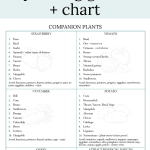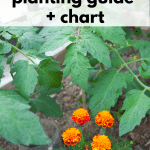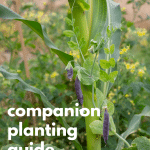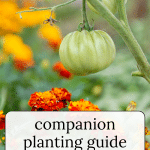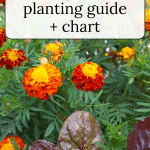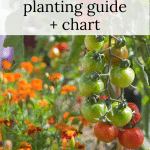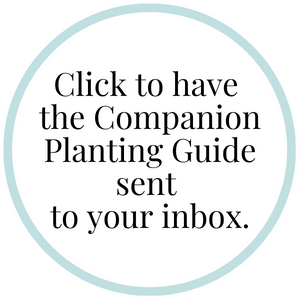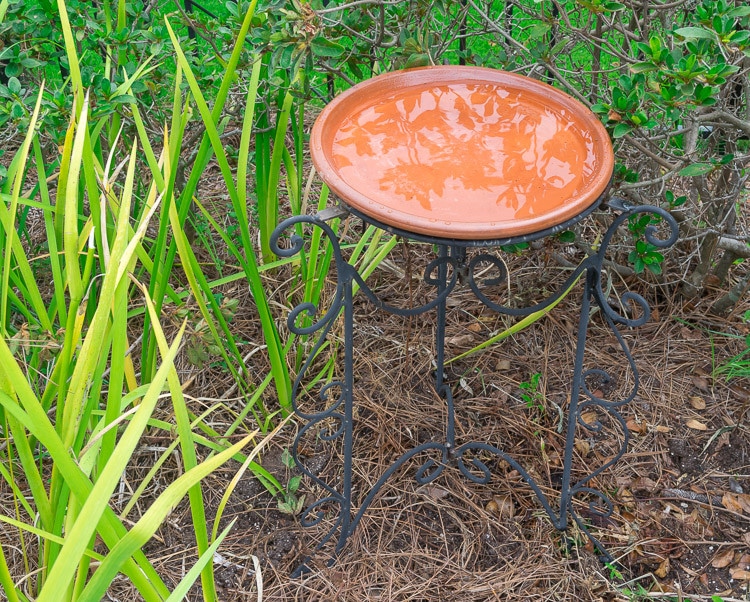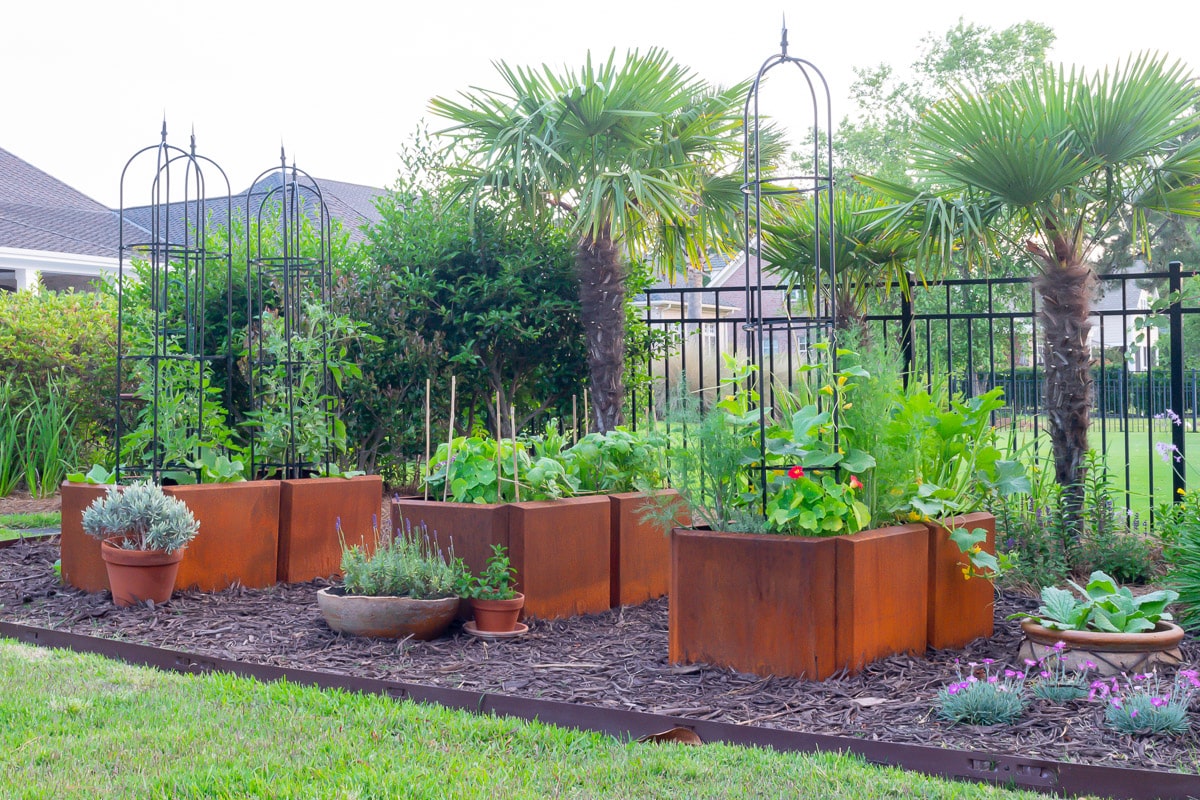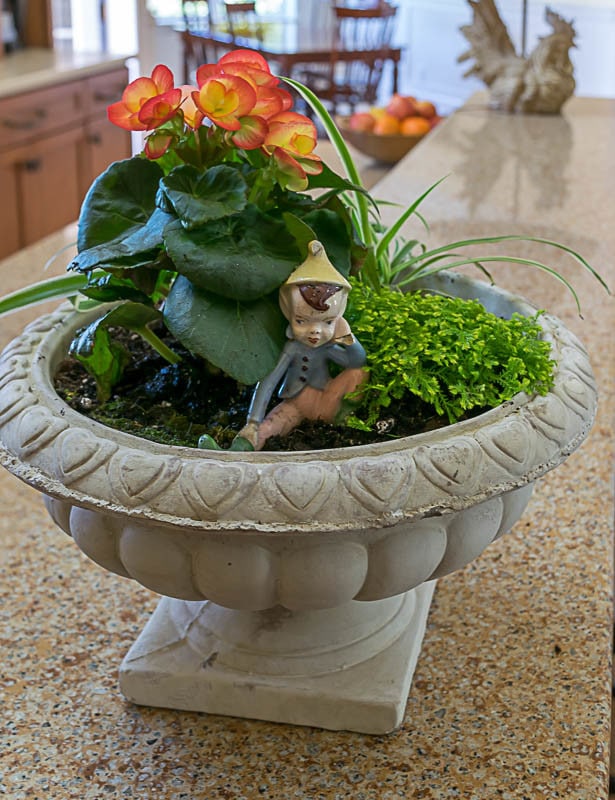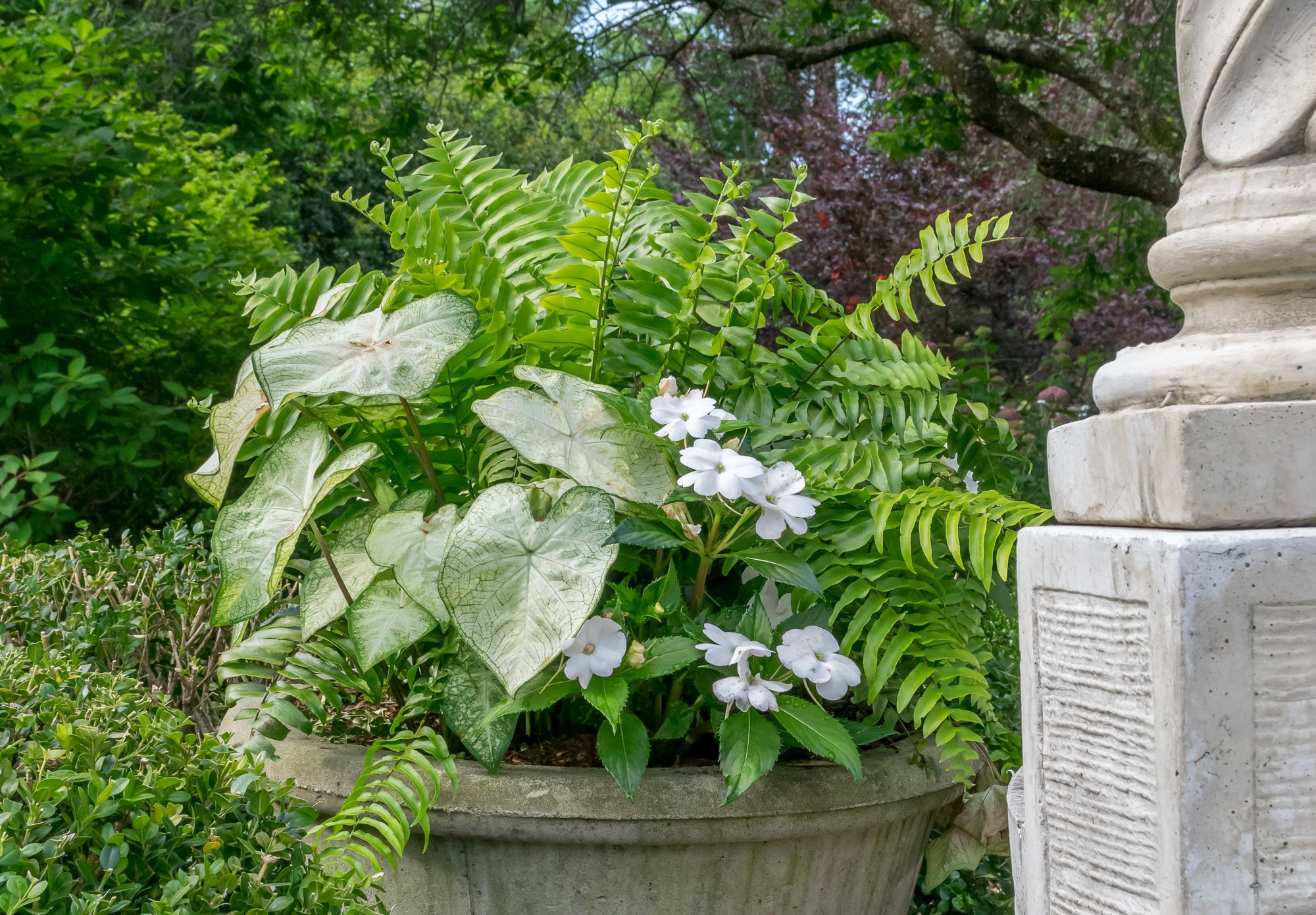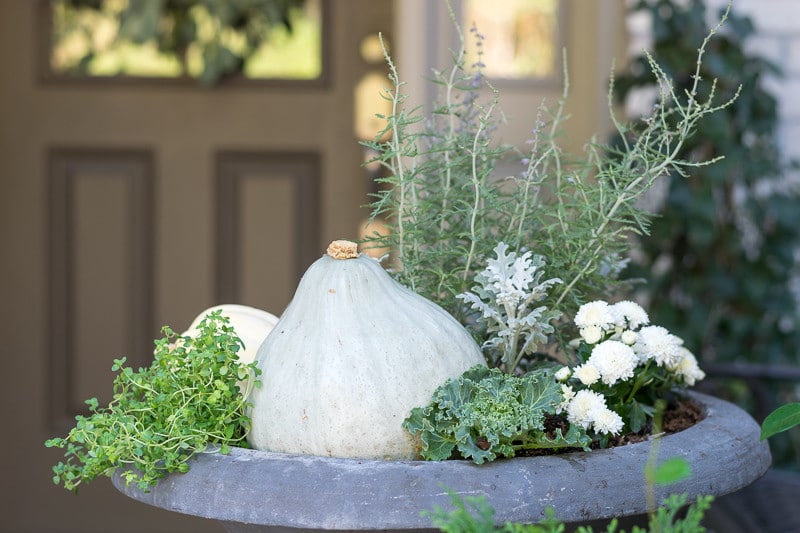Companion Planting Chart + Guide
In this post, we discuss the benefits of companion gardening and how it can enhance your garden this year. Download and print our Companion Planting Chart for easy reference throughout the gardening season.
There are numerous tips and tricks available for growing a healthy and thriving garden at home. I am thrilled to embark on this journey of companion planting with you. Learn from my research and experiences and get the free printable PDF Companion Gardening Chart and Guide.
You may have heard of this method before and wondered how well it works. Or you’ve applied companion gardening tricks to your practice because your grandpa told you to. But why? And does it work? Never fear; we will explore all you need to know about companion gardening techniques in the coming weeks.
Researchers continue to learn more about this technique, meaning some information has been revised, and there’s always more to learn! Let’s get our hands dirty together as we dig into this thorough Companion Gardening Chart and Guide based on proven science and lore passed down through the ages.

Table of Contents
What is Companion Planting?
“…grouping plants together to benefit one another for maximized growth and a flourishing garden.”
Companion gardening is not only about what you grow and how you do it– it’s all about grouping plants to benefit one another for maximized growth and a flourishing garden! You can use this fascinating method for both vegetable and flower gardens. You’ll learn what plants to grow near one another to give them the best chance to grow strong and abundantly. Sound good? Here is how.
Companion gardening is the best way to use your space as efficiently as possible. Each seed or plant is planted intentionally near another to boost their growth and provide their needs. In some cases, one plant benefits from another, and the other is unaffected. However, there are also groups and pairs of plants that mutually benefit from being planted near each other.
To Better Understand This Strategy, Here Are Some Examples of Companion Plants
- Basil and Tomatoes are essential ingredients in many of my favorite dishes, like this Mozzarella Bruschetta Recipe. But did you know they are also a fantastic pair to plant together? Basil repels pests away from vulnerable tomato plants while attracting pollinators like bees. Parsley has a similar relationship with tomatoes as basil does. It also reduces the chance of your tomato plant becoming infested with pesky bugs.

- Garlic has a powerful scent that deters all kinds of damaging insects. This plant is excellent for growing amongst many crops, such as potatoes, cabbage, and fruit trees or bushes. However, there are also quite a few you should keep away from garlic, which we will discuss later.
- Gardeners have used Marigolds for centuries to battle plant-parasitic nematodes and attract beneficial insects. Marigolds’ roots hold a chemical that is nematicidal, insecticidal, and antiviral. However, you can’t plant marigolds once and think you have slayed the nematodes. Nematodes are resilient beasts, so you must keep the marigolds in battle. Marigolds are best when grown as a cover crop before planting your garden. And don’t dig them up; mulch them into the soil at the end of the season. The best marigolds for companion planting are French Marigolds.

- Calendula also repels nematodes and the dreaded Tomato Hornworm and Asparagus beetle. It also attracts butterflies, bees, and hoverflies, which eat aphids.
- Plant beans with potatoes, garlic, or nasturtiums. Potatoes repel Mexican bean beetles, and beans repel Colorado potato bugs. Nasturtiums attract hoverflies, which nosh on aphids.

- Onions will repel carrot flies from carrots and aphids from aphid-prone vegetables. But make sure they are onion-friendly veggies. The attached chart tells you what vegetables and herbs to avoid growing with onion family members.

The free, printable Companion Planting Guide lists ten companion plants for the ten most commonly grown vegetables. Click here to access it in the Subscriber Library. If you aren’t a subscriber, what are you waiting for? This free membership gives you access to all of our printables and patterns, which you can download at no cost! Click here to subscribe and have the chart sent to you all at once!
Attract Beneficial Insects to Your Garden
Attracting beneficial insects to your garden is a natural, organic way to help control damaging insects and pests. Learn everything you need to know to Attract Beneficial Insects to your Garden.
We Are Still Learning About Companion Planting
Companion gardening is an ancient practice, but experts continue to study it since much of what we know is passed down through the years, from generation to generation.
You may be familiar with the Three Sisters, a method of growing beans, corn, and squash together supposedly taught to the settlers by Native Americans. Corn provides a natural trellis to support the pole beans’ growth. Beans fix the nitrogen in the soil for use by both corn and squash. The broad leaves of the squash grow close to the ground, providing natural mulch that suppresses weeds and helps keep the soil moist.
Researchers are studying these theories to discover the truth about companion gardening and its workings. That said, you don’t need to be a master gardener or wait for the research to adopt many of the common-sense practices and benefits of companion planting.
What Are The Benefits of Companion Planting?
Let’s discuss the benefits of this age-old technique. Below are six benefits of companion gardening.
Naturally control common pests.
Many companion gardening relationships involve pest control in the garden, which is why organic gardening devotees have embraced this method. Ditch the harsh chemical-filled pesticides and adopt healthier habits for your garden and the planet.
With companion gardening, you can naturally deter the common pests that cause significant damage to vegetables, fruits, and flowers. For instance, the essential oil in thyme deters cabbage moths, whiteflies, and tomato hornworms.
Nasturtiums and Petunias act as trap crops, luring aphids, tomato hornworms, cabbage moths, and asparagus beetles away from your more susceptible crops. In the case of Petunias, the pests are trapped in their sticky stamen and die.
Attract beneficial insects
In contrast to the benefit above, some plants attract helpful insects, like pollinating bees and butterflies! Some even attract bugs that consume pesky damaging insects. I’ll plant anything that attracts ladybugs, praying mantises, hoverflies, green lacewings, and parasitic wasps. With ladybugs and green lacewings alone, you can mitigate the population of aphids, spider mites, mealybugs, and whiteflies.

Provide shade
Larger plants can provide shade for smaller ones that require protection from the bright sunlight. An excellent example is planting towering corn among your small, heat-sensitive lettuce plants.
Improve soil health
One of the most incredible benefits of companion gardening is its boosting soil health. The biochemical properties of the soil in your garden change based on what you plant. For example, tomatoes may absorb a particular nutrient from the ground more than strawberries.
Beans and peas add nitrogen to the soil, making it rich and healthy. Other plants with tap roots (think carrots, turnips, etc.) aerate the soil to improve drainage, add oxygen, and improve root health.

Reduce weeds
You can intentionally plan your garden to reduce the weeds that grow. Planting crops like potatoes minimizes the empty spaces where weeds often sprout.
Maximize space in the Garden
One of the most prominent perks of companion gardening is how it maximizes the space in your garden. Each plant is situated most effectively, and each one has a purpose. But that doesn’t happen by accident. Make a garden plan on where each plant will go and what companion plant should accompany it.
An important note: companion planting does not negate the need for adequate space between plants. Follow the guidelines for each plant.
How To Plant a Companion Garden
As mentioned, pay attention to the spacing requirements for each plant when planting companion plants. The best course is to plan beforehand, considering each plant’s growth habits, spacing requirements, and water and fertilizer needs. Some other suggestions to keep in mind:
- Don’t position a large plant such that it will block the sun from a smaller plant
- Don’t place two heavy feeders next to each other.
- The same holds for those that have high moisture needs; don’t position two plants that will compete for the water.

Companion Planting in A Raised Bed or In-Ground Garden
This planting guide applies to companion plants in raised beds and in-ground gardens. We do both. You can see our raised garden bed and some recommended vegetables for raised bed gardens here.
What Vegetables Should NOT Be Planted Together?
Just as some plants benefit those around them, others don’t mix. Our Companion Gardening Chart also details which plants should not be planted together.
- Corn and tomatoes don’t work well together. They are both heavy feeders and tomato hornworms are attracted to tomatoes and corn. No bueno!
- The lovely sunflower produces seeds that are toxic to potatoes! So don’t underplant your sunflowers with spuds.
- Vampires aren’t the only ones who find garlic offensive. Garlic produces a chemical that will wilt lettuce leaves. Garlic also deleteriously affects legumes, asparagus, sage, and parsley.
The printable Companion Planting Chart also indicates plants that make bad neighbors.
About Fennel
Poor Fennel, no one wants to hang out with him! But why? Does it have an unearned lousy rap? This may be one of those old wives’ tales that might need to be debunked. I’ve read that fennel secretes a substance that kills plants around it, especially tomatoes and peppers. But then I’ve read many anecdotes of gardeners who have successfully interplanted fennel with other plants. I do know that it will attract a variety of beneficial insects. So, what are your experiences with fennel and other plants?
About Legumes
Legumes, including peas, pole beans, and bush beans, grow nodules on their roots that attract atmospheric nitrogen, which is unusable by plants and converts it into useful ammonia. The legume plant uses most of the fixed nitrogen, but some of the ammonia leaks back into the soil for uptake by other nearby plants. However, the most benefit comes if the legume plant is left in the ground and composted into it.
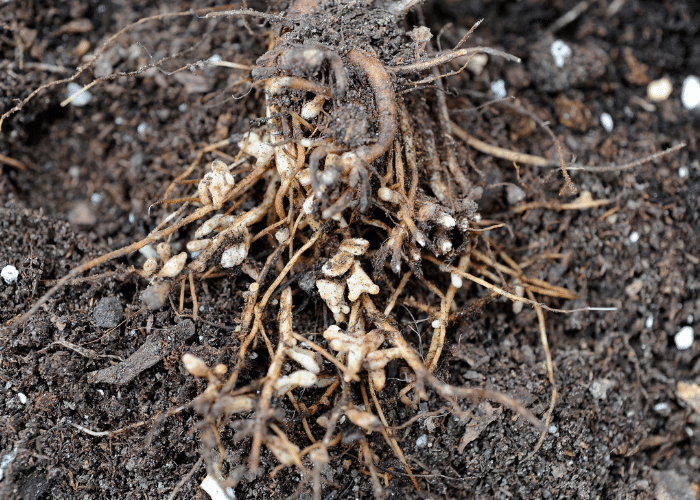
And, to ensure that your legume seeds have the right kind of bacteria for this nitrogen ‘fix,’ it is recommended that you apply an inoculant to the seeds when planting them in the ground or seed starting indoors. Each legume requires a different rhizobia bacteria, so check which one you need for the legumes you will be planting.
Don’t be put off by the thought of inoculating your legume seeds; it is just a matter of sprinkling some of the powder into the hole with your seeds. It couldn’t be easier.
About Brassicas
The Companion Planting Chart often refers to brassicas as ‘bad neighbors.’ Since the list of brassicas is long, we are grouping them under that umbrella. But know that you should include any of these plants in the mustard and cabbage family when ‘brassica’ is noted. Brassicas are generally cool season crops; here are some of the more commonly used and familiar brassicas:
- brussels sprouts
- broccoli
- kale
- turnips
- rutabagas
- cauliflower
- cabbage
- bok choy
- arugula
- radishes
- horseradish
- kohlrabi
- watercress
- mustard greens
Other Organic Methods to Improve the Health of Your Soil and Garden
- All about compost! What is it, why would you want to compost, and how?
- Composting with eggshells.
- How to make compost tea.
- Attract Beneficial Insects to your garden.
Frequently Asked Questions
One common misconception is that companion planting alone can entirely eliminate the need for pest control measures. While it can significantly reduce pest pressure, it’s essential to integrate companion planting with other pest management strategies for optimal results. Additionally, not all plant combinations touted as companion plants exhibit beneficial effects, so it’s crucial to research and experiment to find what works best for your garden.
While companion planting primarily focuses on enhancing vegetable garden health and productivity, some gardeners believe that certain companion plants can influence the flavor of fruits and vegetables. For example, planting aromatic herbs like basil or mint near tomatoes may impart subtle flavor nuances to the fruits. However, the extent of flavor enhancement can vary and may depend on factors such as soil conditions, plant genetics, and environmental factors.
Companion planting techniques can be adapted for container gardening by selecting compatible plant combinations and arranging them in containers with appropriate spacing. Consider plant size, growth habits, and sunlight requirements when planning your container vegetable garden. Additionally, choosing compact varieties and utilizing vertical space can help maximize the benefits of companion planting in limited container space.
Nab the Free, Printable Companion Gardening Chart!
This free, two-page, printable companion planting guide shares ten plants that make great companion plants for broccoli, carrots, cucumbers, kale, strawberries, onions, peppers, potatoes, tomatoes, and zucchini. It also includes plants to avoid. In addition to the Companion Gardening Chart, you might also want to print off the Beneficial Insects Chart which details which plants will attract beneficial insects to your garden and what bad bugs the good bugs can help control.
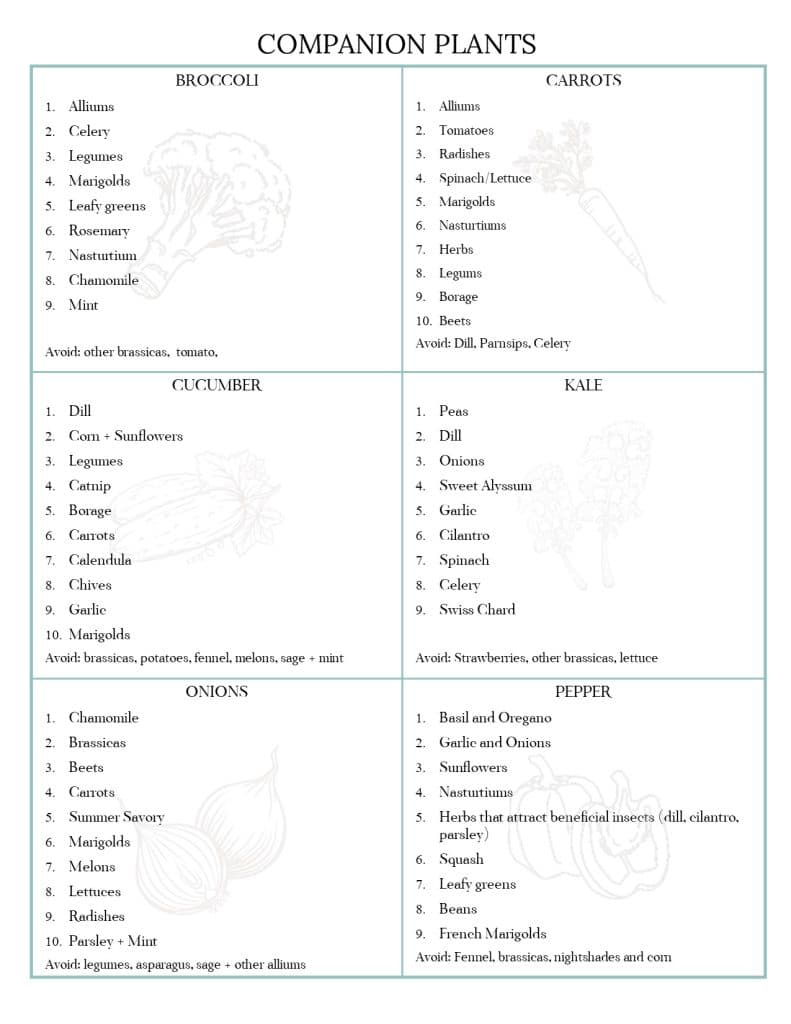
You can nab the printable Companion Gardening Chart in the Library or click the button below to deliver it to your email inbox. Open and print the Chart & Guide to get started, then off to the garden store!
Bookmark this page or pin the following image to return to this Companion Planting Chart and Guide post in the future.
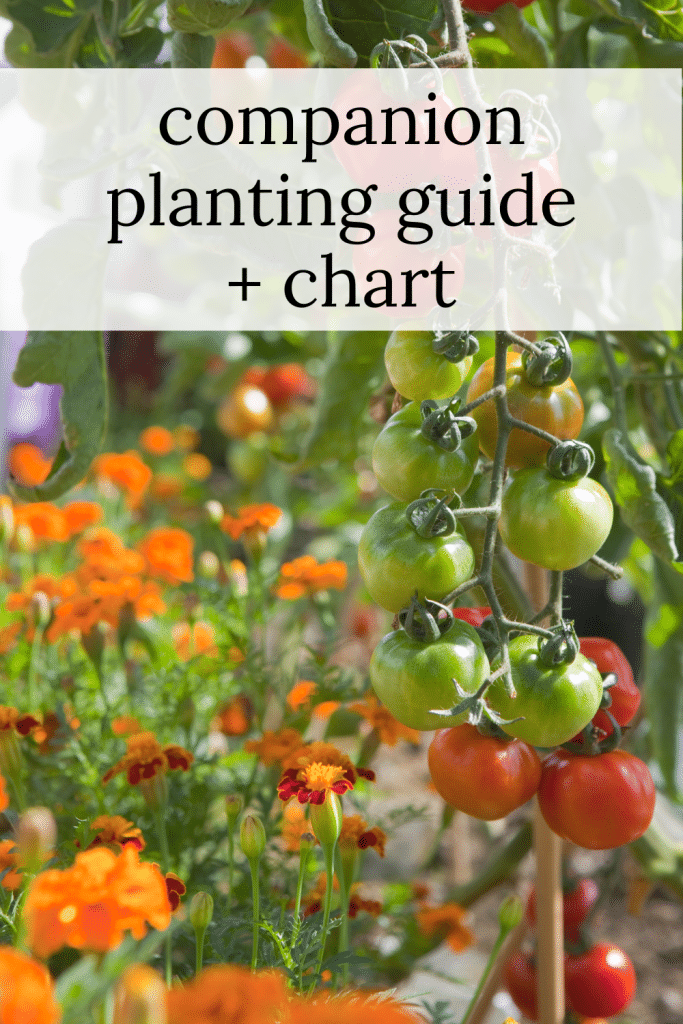
Thanks so much for spending a few minutes of your busy day with me!
To ensure you don’t miss future content, pop your email in the pale green box on the right or click here. I usually send one email weekly, so I won’t inundate your inbox. I’m sensitive to an overflowing email inbox!
We will only use your email address to send you emails, no more than 1-2 weekly. In addition, you will have access to my growing library of knit & crochet patterns and other printables. Check back often as this library will continue to grow. You can unsubscribe anytime by emailing me or clicking on the “unsubscribe” link at the bottom of all emails.
And you can access many of the products I refer to on my Nourish and Nestle Amazon Page. You can access it here.
So, if you’d like to participate in the ‘subscriber benefit’ action, simply subscribe to Nourish and Nestle here or use the form on the right sidebar. It’s slightly towards the top.
I have sent all my subscribers the link to the Subscriber Benefits Library. If you missed it or misplaced it, let me know.
Until next time…


